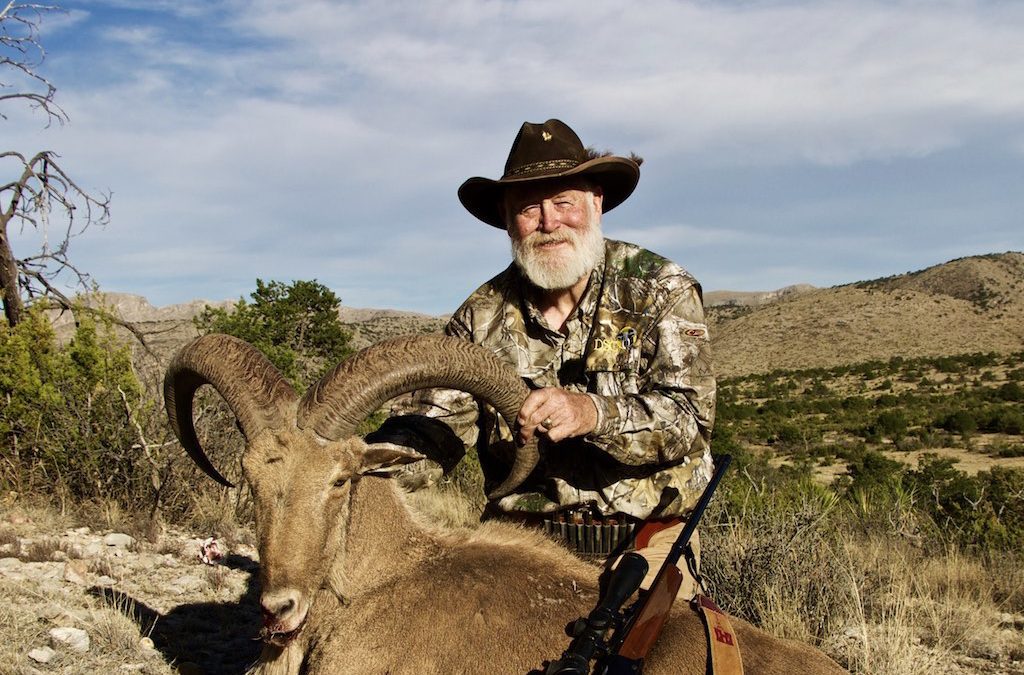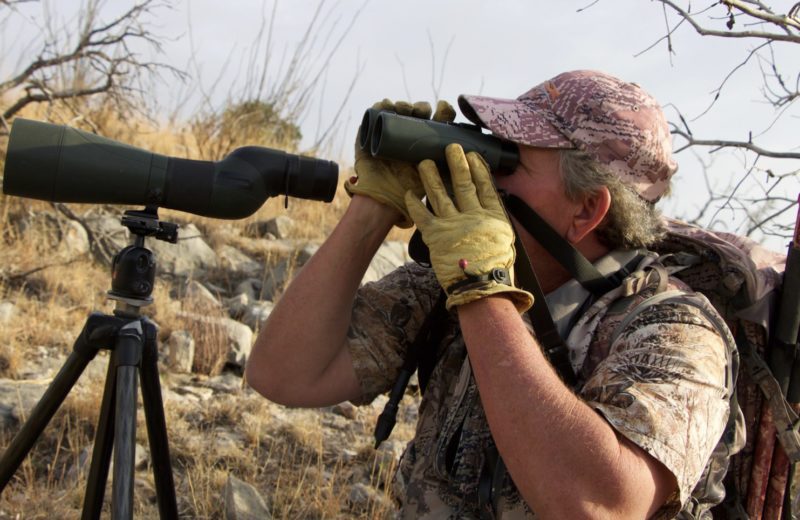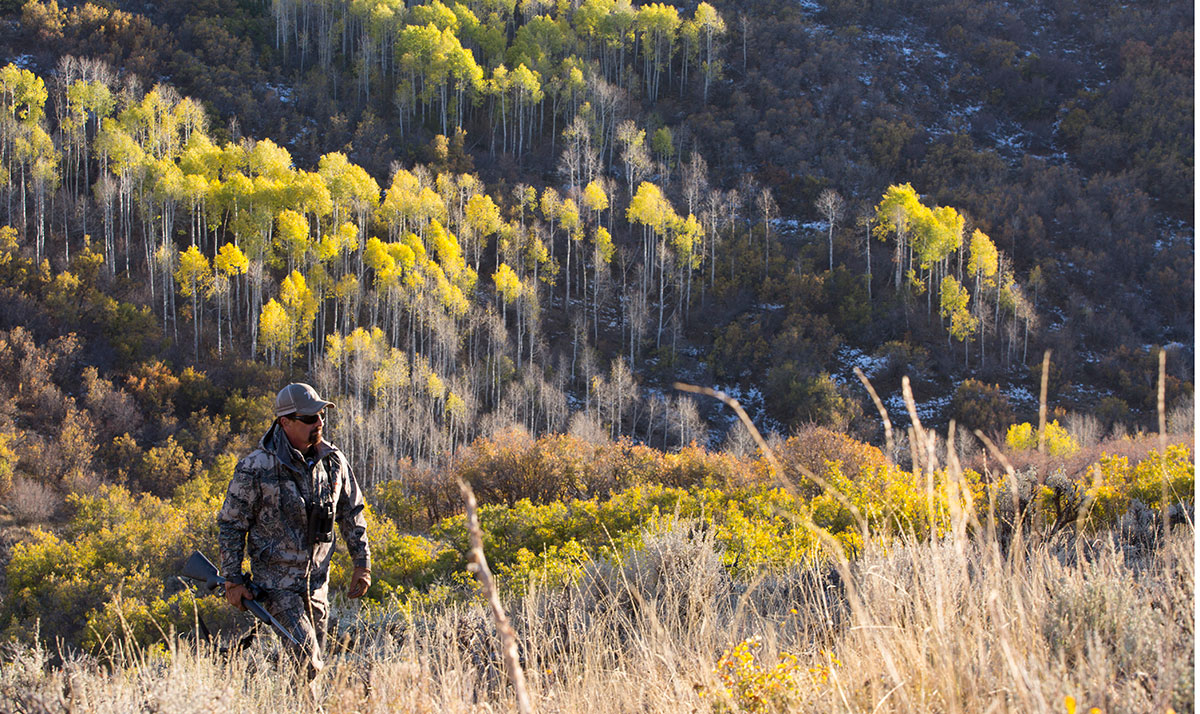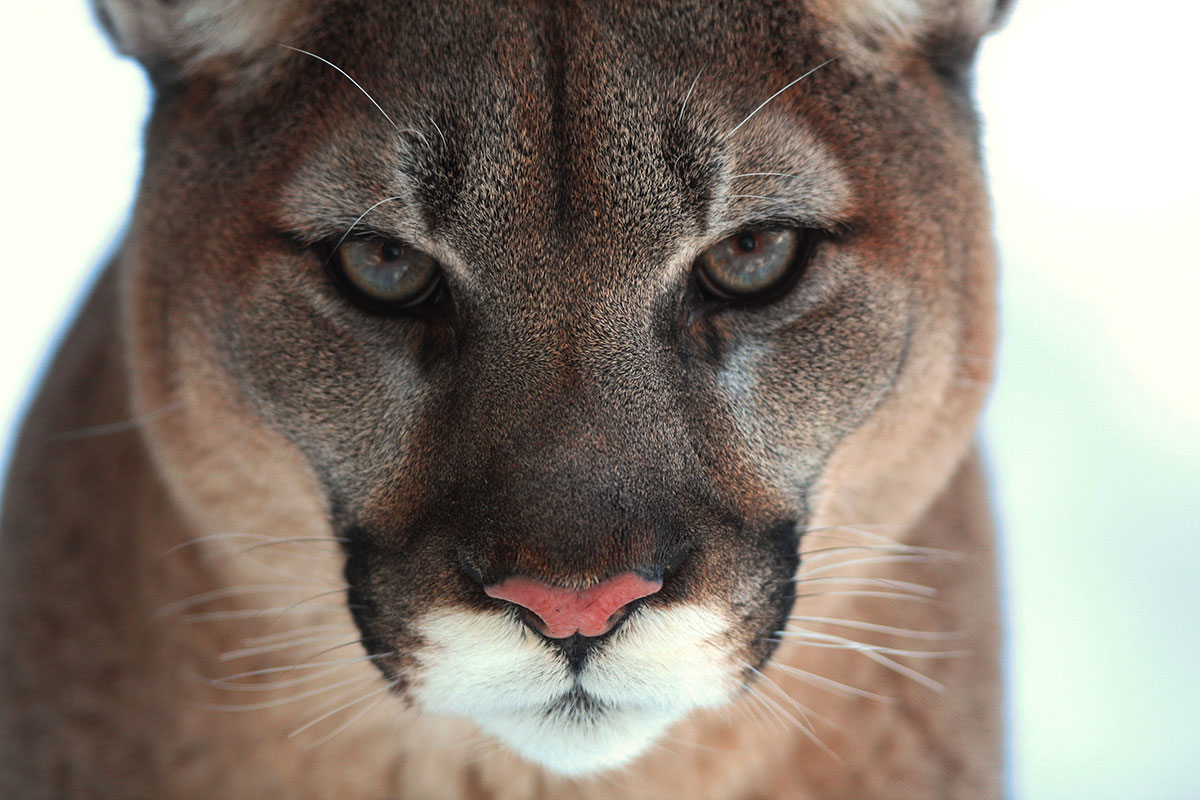After dropping off of the rocky ridge my Wildlife Systems guide said “From a distance they looked interesting, maybe holding a ram we might be interested in. Initially their horns looked impressive, because their bodies are relatively small. They’ll weigh around two hundred pounds, big mature rams will approach and exceed three hundred!”
“Fun stalk regardless! Been years since I’ve gotten that close to a group of aoudad rams.”
“We’ll head to the other side of this ridge and glass from there,” Jackie continued. “During late winter through summer aoudad rams tend to form bachelor herds totally separate from the ewes and lambs. Occasionally you’ll see a single ram but most of the time if you see one, there will be more close by. So, how long do you think their horns were?”
“Based on having hunted aoudad some in years past and working with them as a wildlife biologist, I’d say they were probably twenty-six to about twenty-eight inches long.” I responded. Jackie nodded approvingly.
We walked back to our pickup and drove a couple of miles to another place from which we could glass the surrounding ridges. Along with aoudad we saw mule deer, whitetails and elk.
Aoudad or Barbary sheep were introduced into the rugged mountains of the Texas Trans Pecos, an extension of the Chihuahuan Desert, in the 1950’s. Obviously, their kind liked the arid, rugged terrain. Perhaps through some genetic link it reminded them of their desert, mountainous homeland of northern Africa. They adapted and now claim much of the mountainous Texas Trans Pecos as home.
Because they are legally considered as “exotics” they can be hunted year around, although a current Texas hunting license is required. I had arranged my hunt, which we filmed for an episode of “DSC’s Trailing the Hunter’s Moon” airing year around on Pursuit Channel, through Wildlife Systems. They have access to the very best aoudad habitat and hunting quite possibly in the world.
Three days into my hunt, we had spotted, glassed and often stalked nearly two hundred aoudad rams. The hunting was not unlike pursuing desert bighorn sheep, only there are many more aoudad than desert bighorns. Aoudad hunts are less expensive, but every bit as demanding, tough and enjoyable.
Last afternoon we followed a herd of forty-two aoudad rams high onto a ridge, only to realize none exceeded thirty inches of horn length, my self-imposed minimum. I had taken numerous aoudad and this time I was looking for one for my office wall.
Driving the lowlands between mountains we spotted a ram watching us. He was big of body, shiny on top and had massive horns, indicating age. His color was a darker brown than younger rams and with longer mane and chaps – typical of old rams.
I slid out of the pickup, walked to the back door, grabbed my Ruger Number 1 .300 H&H Mag and loaded a Hornady 180-grain Interlock. Quickly, I got a solid rest, centered the crosshairs on his shoulder and pulled the trigger. Before I could reload, he was down!
It was dark before we finished taking photos, then packing out the meat, 32 ½ inch horns and the cape of my eleven-year old ram!
 A superb collection of stories that captures the very soul of hunting. For hunters, listening to the accounts of kindred spirits recalling the drama and action that go with good days afield ranks among life’s most pleasurable activities. Here, then, are some of the best hunting tales ever written, stories that sweep from charging lions in the African bush to mountain goats in the mountain crags of the Rockies; from the gallant bird dogs of the Southern pinelands to the great Western hunts of Theodore Roosevelt. Great American Hunting Stories captures the very soul of hunting. With contributions from: Theodore Roosevelt, Nash Buckingham, Archibald Rutledge, Zane Grey, Lieutenant Townsend Whelen, Harold McCracken, Irvin S. Cobb, Edwin Main Post, Horace Kephart, Francis Parkman ,William T. Hornaday, Sc.D, Rex Beach, and more. Buy Now
A superb collection of stories that captures the very soul of hunting. For hunters, listening to the accounts of kindred spirits recalling the drama and action that go with good days afield ranks among life’s most pleasurable activities. Here, then, are some of the best hunting tales ever written, stories that sweep from charging lions in the African bush to mountain goats in the mountain crags of the Rockies; from the gallant bird dogs of the Southern pinelands to the great Western hunts of Theodore Roosevelt. Great American Hunting Stories captures the very soul of hunting. With contributions from: Theodore Roosevelt, Nash Buckingham, Archibald Rutledge, Zane Grey, Lieutenant Townsend Whelen, Harold McCracken, Irvin S. Cobb, Edwin Main Post, Horace Kephart, Francis Parkman ,William T. Hornaday, Sc.D, Rex Beach, and more. Buy Now





